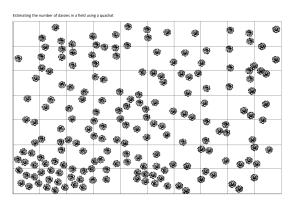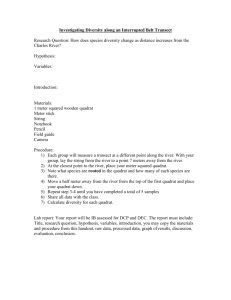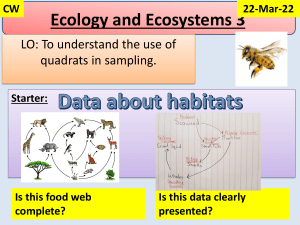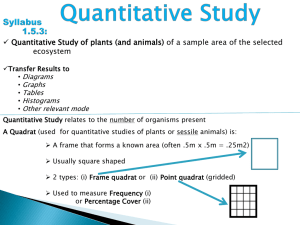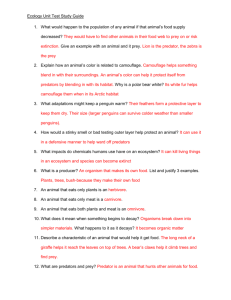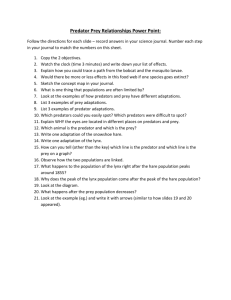Biology: Feeding Relationships and Adaptation Food chains
advertisement
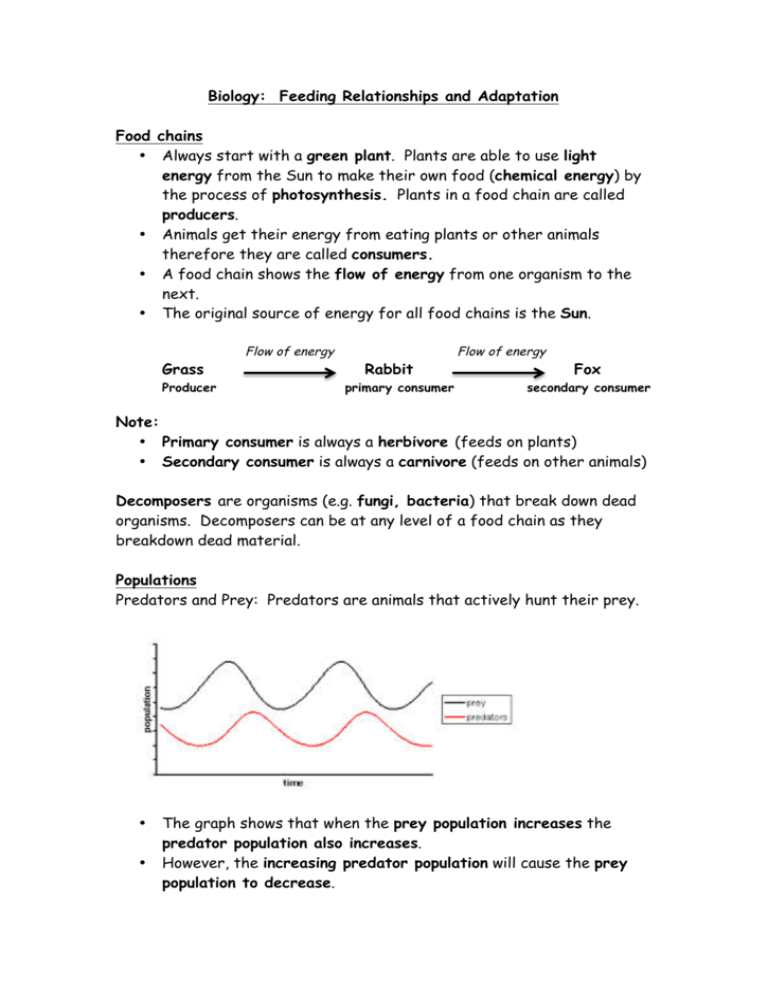
Biology: Feeding Relationships and Adaptation Food chains • Always start with a green plant. Plants are able to use light energy from the Sun to make their own food (chemical energy) by the process of photosynthesis. Plants in a food chain are called producers. • Animals get their energy from eating plants or other animals therefore they are called consumers. • A food chain shows the flow of energy from one organism to the next. • The original source of energy for all food chains is the Sun. Grass Producer Flow of energy Rabbit primary consumer Flow of energy Fox secondary consumer Note: • Primary consumer is always a herbivore (feeds on plants) • Secondary consumer is always a carnivore (feeds on other animals) Decomposers are organisms (e.g. fungi, bacteria) that break down dead organisms. Decomposers can be at any level of a food chain as they breakdown dead material. Populations Predators and Prey: Predators are animals that actively hunt their prey. • • The graph shows that when the prey population increases the predator population also increases. However, the increasing predator population will cause the prey population to decrease. Population size can also be affected by: • Food shortage. • Lack of space (overcrowding) • Spread of disease. • Increase in poisons / pollution Quadrats and measuring the size of a population • • • • • A quadrat is a square that can be used to count populations. Place quadrat onto ground Count number of individuals of a species in the quadrat area Repeat process (for example, ten times – as this then allows you to calculate an average – making the results more reliable) If the quadrat is 1 m2 and the area you are studying is 1000 m2. Then multiply the number of individuals in a single quadrat by 1000. This gives you an estimated population for the 1000 m2 area. Adaptation These are the features animals and plants have to help them survive in their environment. Polar bears • White fur for camouflage in the snow • Thick layer of fat to insulate against cold • Wide paws (large surface area) to help walk across soft snow and also helps with swimming. Penguins • Huddle together to keep warm • Hold eggs in a pouch to keep the egg from touching the ice. Camels • Feet have large surface area to help prevent them from sinking into the sand. • Fat store in hump • Yellow colour to camouflage in sand • Long eyelashes to protect against sand storms. Cacti • No leaves to reduce water loss. • Store water in stem – leaves developed into spines to protect stored water. • Large, shallow root system to absorb any available water.
